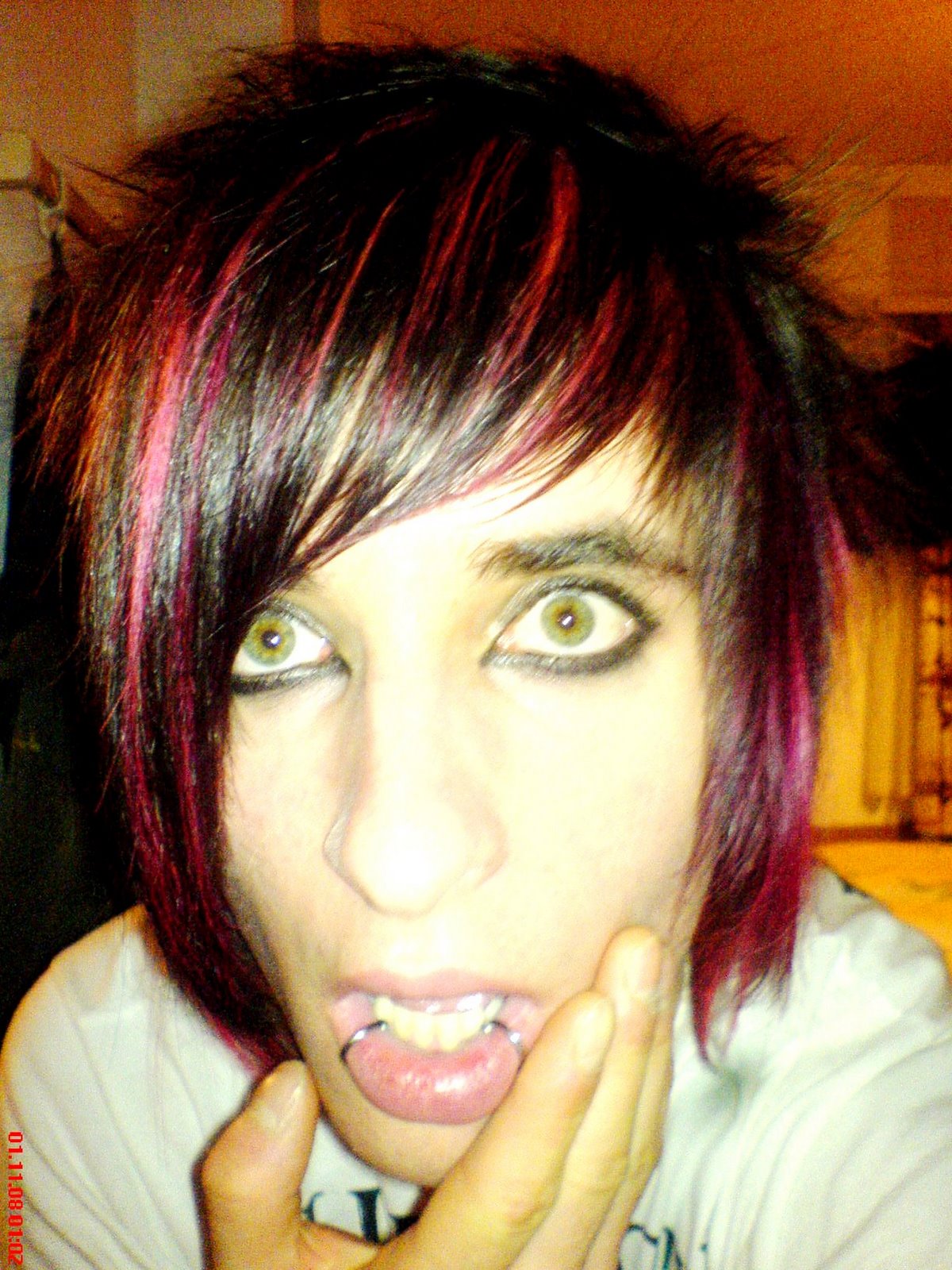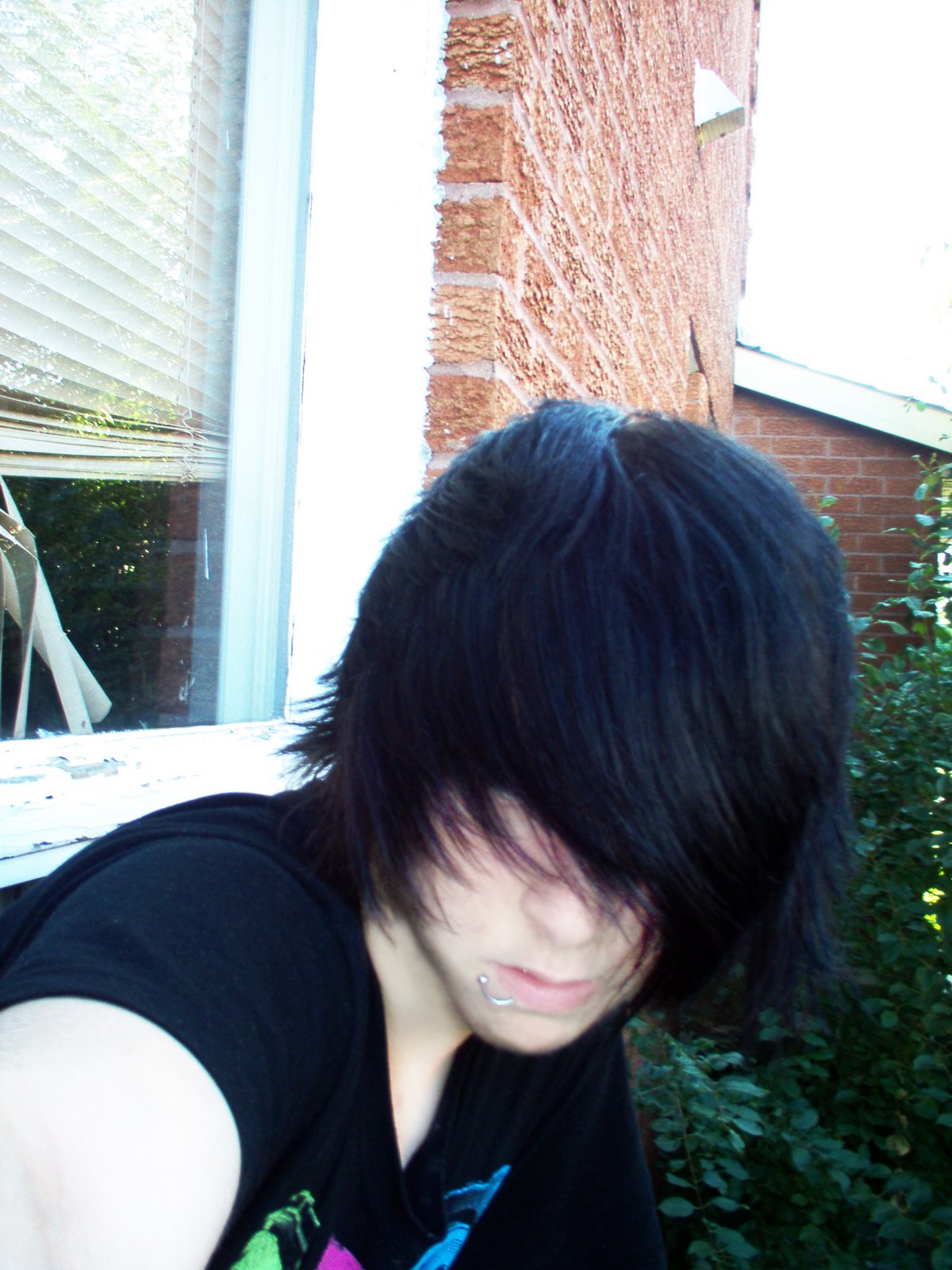Have you ever encountered someone with dark clothing, expressive hairstyles, and a penchant for deep emotional expression? This is often the quintessential image of an emo person, a term that has evolved significantly over the decades. Originally associated with a genre of music, the emo subculture has expanded to encompass a lifestyle, a fashion statement, and a means of artistic expression. But what does it truly mean to identify as emo in today’s world?
In essence, an emo person is someone who embraces the emotional intensity of their thoughts and feelings, often channeling this through various forms of expression, such as music, fashion, and art. This subculture emerged in the mid-1980s, branching out from punk rock, and has since garnered both admiration and criticism. Emo individuals often find solace in their communities, where they can share their experiences and connect with others who resonate with their emotional landscape.
As we delve deeper into the world of emo, it's important to understand that this identity goes beyond just aesthetics. Emo individuals often grapple with themes of love, loss, and existential angst, which they articulate through their clothing choices, musical preferences, and even their social interactions. So, what is an emo person really like? Let’s explore the various dimensions of this complex subculture.
What is the Origin of the Emo Subculture?
The emo subculture has its roots in the punk rock movement of the 1980s. Bands like Rites of Spring and Embrace began to blend emotionally charged lyrics with the raw sound of punk. This marked the birth of “emotional hardcore” or emo, which focused on personal and introspective themes. Over the years, the genre has evolved, leading to the emergence of various subgenres like pop-punk and screamo, which further diversified the emo landscape.
Who are Some Famous Emo Bands?
Several bands have significantly contributed to the popularity of the emo genre, helping to shape what is an emo person today. Here are some notable mentions:
- My Chemical Romance
- Fall Out Boy
- Dashboard Confessional
- Taking Back Sunday
- Paramore
How Does Fashion Play a Role in Emo Identity?
Fashion is a critical aspect of emo culture. Emo individuals often wear dark clothing, skinny jeans, band t-shirts, and accessories like studded belts and wristbands. Hairstyles are often characterized by dyed black or brightly colored hair, with side-swept bangs that cover one eye. This distinct style serves as a visual representation of their emotional depth and individuality.
What Are the Key Characteristics of an Emo Person?
To better understand what is an emo person, it’s important to recognize some of the key characteristics that define this subculture:
- Emotional Expression: Emo individuals are known for their heightened emotional awareness. They often express their feelings openly, whether through music, writing, or conversation.
- Aesthetic Choices: From fashion to art, emo culture values a distinctive aesthetic that reflects personal struggles and triumphs.
- Community and Belonging: Many emo individuals find solace in their communities, where shared experiences foster a sense of belonging.
- Artistic Engagement: Emo culture often encourages artistic expression, leading individuals to engage in music, writing, and visual arts.
What Are Common Misconceptions About Emo People?
Despite its rich history and cultural significance, emo culture is often misunderstood. Some common misconceptions include:
- All Emo People Are Depressed: While many emo individuals do experience deep emotions, not all are perpetually sad or depressed.
- Emo is Just a Phase: For many, emo is not just a fleeting trend but a genuine identity that reflects their emotional experiences.
- Emo People Are Anti-Social: Emo individuals often seek out community and connection with others who share similar feelings and experiences.
What Are the Benefits of Identifying as Emo?
Identifying as emo can provide several benefits, including:
- Emotional Outlet: Emo culture allows individuals to express their emotions freely, which can be therapeutic.
- Community Support: Emo individuals often find a supportive network of friends who understand their experiences.
- Creative Expression: The emphasis on art and music allows emo individuals to channel their feelings into creative outlets.
How Has Emo Culture Evolved in Recent Years?
In recent years, emo culture has seen a resurgence in popularity, particularly among younger generations. Social media platforms like TikTok and Instagram have played a significant role in rekindling interest in emo aesthetics and music. Many influencers and creators share their interpretations of emo style, leading to a broader acceptance and understanding of what it means to be emo.
What is the Future of Emo Culture?
As we look to the future, the emo subculture is likely to continue evolving. With a growing acceptance of mental health discussions and emotional expression, emo culture may find new ways to thrive. The blending of different musical genres and styles will likely lead to a richer tapestry of emo identity, allowing for greater inclusivity and diversity within the community.
Conclusion: What is an Emo Person?
In conclusion, an emo person is someone who embraces emotional authenticity and artistic expression through various mediums. From its musical origins to its fashion statements, emo culture represents a unique way to navigate the complexities of human emotions. While often misunderstood, the emo subculture offers a safe space for individuals to explore their feelings and connect with others on a profound level. Whether through music, fashion, or community, emo culture remains a significant and vibrant part of contemporary identity.



